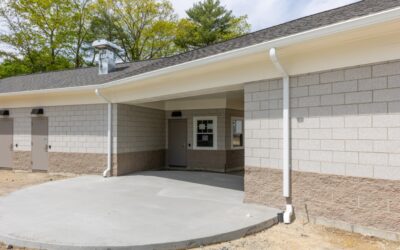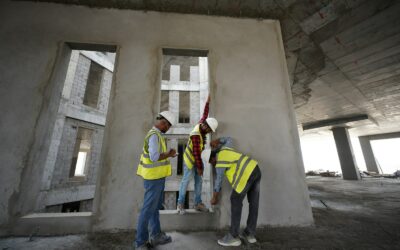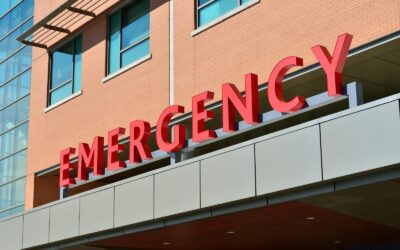Navigating a construction site without the proper construction sign can be challenging, even dangerous. Construction signs are crucial for maintaining safety and ensuring smooth operations. For property developers, understanding the different types of construction signs and their applications is essential to creating a secure and efficient work environment.
In this listicle, we’ll explore the importance of construction signs, break down their different categories, and provide practical advice for selecting and placing these signs on your site. By the end, you’ll be equipped with the knowledge to enhance safety and communication on your projects.

The Importance of Every Construction Sign
Construction sites are bustling hubs of activity, often involving heavy machinery, hazardous materials, and numerous workers. The presence of clear and effective construction signs helps:
- Alert Drivers and Passersby to potential hazards, minimizing the risk of accidents.
- Guide Workers and visitors safely through the site.
- Communicate Important Information quickly and effectively.
- Ensure Compliance with local regulations and safety standards.
Without proper signage, the likelihood of accidents, confusion, and delays increases significantly, impacting overall project efficiency and safety.

Understanding Red Construction Signs: Their Purpose and Common Uses
Red construction signs are typically used for prohibitory or danger-related messages. They signal immediate attention and action due to their bold color.
Common Uses
- Danger Areas: Indicating high-risk zones where entry is restricted without proper authorization or equipment.
- No Entry and No Trespassing Signs
- Fire Safety Equipment Locations such as fire extinguishers and alarms.
- Real-Life Example: In the Golden Gate Bridge Retrofit Project, custom weather-resistant red signs were essential in ensuring worker safety and public awareness during seismic retrofits. These signs clearly marked danger zones and restricted areas, preventing unauthorized access and potential accidents.

Yellow or Amber Construction Signs: Significance and Applications
Yellow or amber construction signs serve as warnings. They alert workers and visitors to potential hazards where caution is required.
Applications
- Road Work ahead
- Heavy Machinery Operation Areas
- Slippery or Uneven Surfaces
- Case Study: During the Panama Canal Expansion, yellow construction signs played a vital role in guiding maritime traffic and ensuring the safety of workers and vessels. These signs warned of temporary hazards, preventing accidents and maintaining smooth operations.

Blue Construction Signs: Specialized for Safety and Information
Blue construction signs provide mandatory instructions or convey important safety information. They are often used where specific actions are required to maintain safety.
Common Applications
- Wearing Specific Personal Protective Equipment (PPE) like hard hats or safety goggles.
- Emergency Exit Routes
- First Aid Stations
- Real-Life Scenario: At the Dubai Expo 2020 Site, the use of blue construction signs was crucial in providing clear and concise information to a diverse workforce and millions of expected visitors. These signs ensured everyone knew the safety protocols, contributing to a secure environment.

Green Construction Signs: Environmental Awareness and Safety
Green construction signs are associated with safe conditions and environmental awareness. They often indicate emergency exits, first aid stations, and environmental practices.
Applications
- Emergency Exits
- First Aid Locations
- Recycling and Waste Disposal Areas
- Case Study: The High Line Park Construction in New York City strategically placed green construction signs to promote an eco-friendly image and ensure visitor safety. The signs guided visitors through safe pathways while highlighting the project’s commitment to sustainability.

Factors to Consider When Choosing the Right Construction Sign
Selecting the right construction sign involves several considerations:
- Durability: Choose weather-resistant signs to withstand harsh conditions and remain legible over time.
- Visibility: Ensure signs are visible from a distance and under various lighting conditions.
- Regulatory Compliance: Check that signs meet local safety regulations and standards.
- Placement: Strategically place signs where they are most needed for maximum impact.

Benefits of Using Weather-Resistant Construction Signs
Weather-resistant signs offer several advantages:
- Longevity: They are long-lasting, reducing the need for frequent replacements.
- Clarity: Remain clear and readable despite exposure to harsh weather conditions.
- Cost-Effectiveness: While initially more expensive, their durability results in long-term savings.
- Case in Point: A residential project in a tornado-prone area emphasized the selection of durable, weather-resistant signs. These signs withstood extreme weather conditions, maintaining safety and communication during unpredictable events.

Tips for Proper Placement of Construction Signs on Sites
Proper placement of construction signs ensures they are effective:
- Strategic Locations: Place signs at entrances, exits, and high-traffic areas.
- Height and Angle: Position signs at eye level and angle them for maximum visibility.
- Consistency: Use consistent signage throughout the site to avoid confusion.
- Regular Inspections: Routinely inspect signs for damage or wear and replace them as needed.
- Real-Life Impact: Before-and-after scenarios from various projects highlight the impact of proper sign placement. Effective placement led to improved project efficiency and safety, while poor placement resulted in accidents and delays.

Construction Signs and What They’re For
Understanding the various types of construction signs and their specific purposes is crucial for promoting safety and efficiency on job sites. Below is a list of common construction signs along with their intended uses:
- Caution Signs: Indicate that there is a potential hazard ahead; they remind workers and passersby to remain alert.
- Warning Signs: Highlight specific dangers, such as falling objects or electrical hazards, prompting individuals to take extra precautions.
- Mandatory Signs: Mandate certain actions, such as wearing safety helmets or harnesses to comply with safety regulations.
- Prohibition Signs: Clearly indicate actions that are not allowed, like smoking in designated areas or unauthorized personnel entry.
- Emergency Signs: Guide individuals to emergency exits and first aid stations, ensuring quick access during critical situations.
- Information Signs: Provide useful information such as site rules, contact details for site managers, and directions to facilities.
By familiarising yourself with these categories and their functions, you can enhance safety and communication on construction sites significantly.

Where to Get Construction Signs
Finding the right construction signs is now easier than ever, thanks to numerous online retailers that specialize in safety signage. Here are some recommended sources where you can easily find and design your perfect construction signs:
- Safety Sign
- Offers a wide stock of customizable signs.
- Ships quickly and efficiently.
- Perfect for all types of construction needs.
- Zoro
- Features a vast selection of construction signs available in multiple dimensions, including various inches.
- Easy navigation allows you to type in specific keywords to find what you need.
- Uline
- Provides high-quality stock signage that caters to diverse safety requirements.
- Offers quick shipping options for urgent orders.
- FastSigns
- Specializes in designing customized signs that fit your specific needs.
- Click to explore their easy-to-use design tool and find the perfect sign for your project.
By utilizing these resources, you can easily navigate to the type of construction signs you need, ordering directly from their website, ensuring safety and compliance on your job site.

Summary of the Importance of Every Construction Sign
Construction signs play a critical role in ensuring safety, efficiency, and organization at construction sites. They serve to communicate vital information to both workers and the public, helping to minimize accidents and maintain a safe environment. Below is a summary of the importance of various construction signs commonly found on job sites:
- Warning Signs: These signs alert workers and passersby about potential hazards, such as falling objects, electrical dangers, or slippery surfaces. By raising awareness, warning signs help prevent accidents and injuries.
- Traffic Control Signs: Essential for managing vehicle flow around construction zones, these signs direct traffic and inform motorists of detours, lane closures, or reduced speed limits, ensuring the safety of both drivers and construction workers.
- Information Signs: Providing critical data, information signs can indicate the site supervisor’s contact details, project timelines, or safety protocols. These signs facilitate communication and ensure everyone is informed about the site’s conditions.
- Personal Protective Equipment (PPE) Signs: These signs remind workers of the required safety gear, such as hard hats, gloves, or safety glasses. Ensuring compliance with PPE requirements is vital for minimizing workplace injuries.
- Construction Zone Signs: These signs identify the area as a construction site, discouraging unauthorized entry and protecting both the public and the workers within the zone.
- Emergency Signs: Indicating the locations of emergency exits, first aid stations, and fire extinguishers, these signs are crucial in guiding individuals to safety should an emergency arise.
- Directional Signs: These signs help in navigating the construction site, directing personnel to various areas such as restrooms, break rooms, or supply storage. Proper signage contributes to an organized and efficient workflow.
By employing a comprehensive range of construction signs, construction sites can significantly enhance safety, streamline operations, and foster a culture of awareness among workers and the community.

Enhance Safety and Communication with the Right Construction Signs
Construction signs are more than just regulatory requirements; they are vital tools for ensuring safety and smooth operations on your site. By understanding the different types of signs and their applications, you can create a safer work environment and improve overall project efficiency.
If you’re ready to get started with your next construction job, reach out to us at South Coast Improvement Company. We’re the construction company you can trust from start to finish of your construction job.

Resources for Understanding Construction Signs and Construction Safety
To enhance your understanding of construction signs and safety protocols, consider exploring the following resources:
- Occupational Safety and Health Administration (OSHA)
- National Safety Council (NSC)
- American National Standards Institute (ANSI)
- Construction Industry Training Board (CITB)
- National Institute for Occupational Safety and Health (NIOSH)
- National Highway Traffic Safety Administration (NHTSA)
- Safety and Health in Construction – HSE
- Center for Construction Research and Training (CPWR)
- American Traffic Safety Services Association (ATSSA)
- Federal Highway Administration (FHWA)
These resources provide valuable information, guidelines, and standards that can help ensure effective communication and safety within construction environments.
View Our Work
The Overlook – Masonic Health System
"We’re honored to have partnered with The Overlook on this transformative initiative. Our team brought specialized expertise in working within occupied senior living communities, delivering a seamless renovation that aligns with The Overlook’s exceptional standards of...
Hamilton Wenham
Their team was collaborative, responsive, and committed to our shared vision for this space, -Eric Tracy Superintendent, Hamilton-Wenham Regional School District We partnered with the Hamilton-Wenham Regional School District to deliver a brand-new athletic building...






